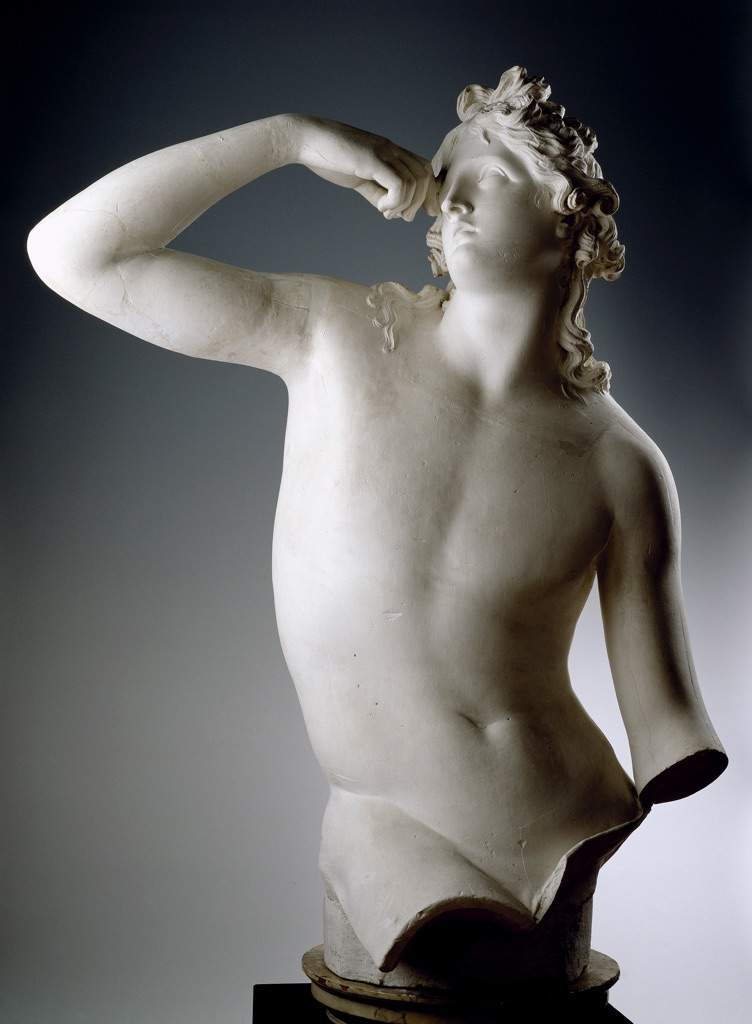Canova's Rezzonico Genius on its way to New York.
"Genius Rezzonico," a plaster sculpture by Antonio Canova, will be exhibited at the upcoming Tefaf New York, the major antique art fair to be held Oct. 28-Nov. 1. This sculpture is just over three feet tall and depicts a wingless angel brushing his forehead with his hand as a sign of mourning.
The “Genius Rezzonico” was created by the Neoclassical sculptor in 1793 for his patron, Girolamo Zulian, ambassador of the Venetian Republic to Rome, and was made in the artist’s studio directly from a marble original: the "Winged Genius, " one of the three figures destined for the funeral monument of Pope Clement XIII Rezzonico in St. Peter’s Basilica. Canova’s plaster copies are extremely rare. This one, forgotten for centuries in a villa near Florence, will be on public display for the first time at the Park Avenue Armory with an estimate of $4 million.
Discovering the existence of this sculpture was gallery owner Carlo Orsi, president of the Associazione Antiquari Italiani, who found it in a villa belonging to the descendants of a Paduan count who was a good friend of both Canova and Zulian. There is another plaster version of this sculpture, which survived inside the Gipsoteca Canova in Possagno, Canova’s birthplace, but, unlike the original that will be exhibited in New York, it was badly damaged in 1917, during World War I.
“They are very rare sculptures,” University of Milan art historian Fernando Mazzocca told the New York Times, “Canova made them with special care to give them to people for whom he had special reasons for gratitude.” This is not the first time that a sculpture by Canova has been brought to New York: three years ago at the Metropolitan a small exhibition presented the American public with an extraordinary series of newly restored life-size models illustrating scenes from the Old and New Testaments made for the Canovian Temple, a church inspired by the Pantheon in Rome and the Parthenon in Athens, which would later be the artist’s mausoleum.
Also on view at the Frick Collection next spring will be preparatory plaster models of the George Washington commissioned from the Venetian artist by the State House of North Carolina in 1816. That sculpture, which depicted Washington as a Roman general, was destroyed in a fire five years later: a cast of the original and a preparatory model depicting the first U.S. president in a heroic, unvetted version will arrive at the Frick from Possagno in May.
Source: ANSA
 |
| Canova's Rezzonico Genius on its way to New York. |
Warning: the translation into English of the original Italian article was created using automatic tools. We undertake to review all articles, but we do not guarantee the total absence of inaccuracies in the translation due to the program. You can find the original by clicking on the ITA button. If you find any mistake,please contact us.





























